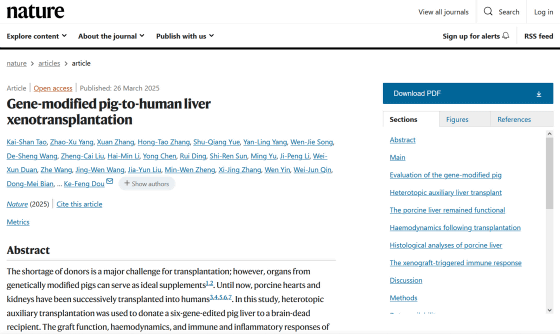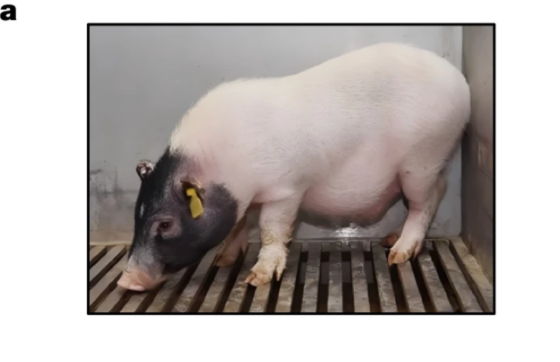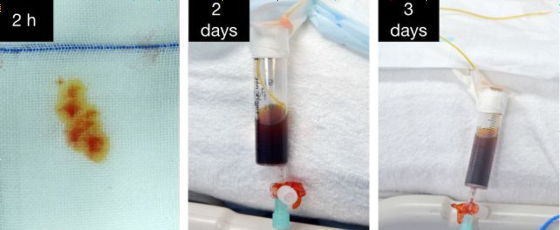World's first successful experiment in transplanting a pig's liver into a brain-dead donor, providing hope for liver failure patients awaiting transplants

In a new paper published in the international academic journal Nature, a research team from China's Fourth Military Medical University (Air Force Military Medical University) reported that they had successfully transplanted genetically modified pig livers into brain-dead donors. The transplanted livers performed basic metabolic functions for 10 days, giving hope to patients with liver failure who are waiting for donors.
Gene-modified pig-to-human liver xenotransplantation | Nature

Pig Liver Successfully Transplanted Into Human Patient in World First : ScienceAlert
https://www.sciencealert.com/pig-liver-successfully-transplanted-into-human-patient-in-world-first
Organ transplantation is the only way to treat severe internal organ diseases, but because the number of donors who can provide organs is limited, many patients die while waiting for a transplant. In recent years, research has been progressing on transplanting organs from genetically modified pigs into humans to prevent rejection, and successful cases of heart and kidney transplants have already been reported.
Compared to the kidney, the liver is an organ with complex functions, and pig liver transplants are considered more difficult because the fat, protein, and glucose produced in pig livers can trigger immune responses in the human body that are difficult to suppress. In 2023, an experiment was successfully conducted in which a genetically modified pig liver was connected to the outside of a brain-dead patient for three days, but no successful cases of transplanting a pig liver into a patient's body had been reported.

In this study, the team transplanted pig livers that had undergone six genetic modifications, such as 'removal of genes that cause hyperacute rejection' and 'insertion of human genes,' into patients who had been diagnosed as brain dead. Rather than completely replacing the patient's liver, the transplant was performed by placing the pig's liver in a different location in the abdominal cavity and connecting it to the blood vessels while leaving the original liver in place.
The photo below shows the genetically modified pig used as a donor.

Over the course of 10 days, the pig livers transplanted into the brain-dead patients continued to function until the end. The rate of blood flow through the liver remained good, and
In addition, activation of immune cells such as T cells and B cells was observed after transplantation, but it has been reported that rejection reactions could be avoided by appropriate use of immunosuppressants.
The following photographs show the bile secreted by a pig liver transplanted into a brain-dead patient, arranged from left to right in the order of '2 hours after transplant,' '2 days after transplant,' and '3 days after transplant.' You can see that the amount of bile secreted is increasing.

In this experiment, the brain-dead patient's original liver was functioning normally, so it is unclear whether the pig's liver would function properly in the body of a patient with liver failure. Nevertheless, the results show that acute rejection can be prevented even when a genetically modified pig's liver is transplanted, giving hope to patients with liver disease.
'This is the first time in the world that a genetically modified pig liver has been transplanted into a brain-dead person,' said Rafael Matesanz of Spain's National Transplant Institute , who was not involved in the research. 'It is an important experiment and opens up a different avenue to what has been attempted so far with both hearts and kidneys - for example to temporarily replace a diseased liver until a human liver is available for definitive transplantation.'
Related Posts:







